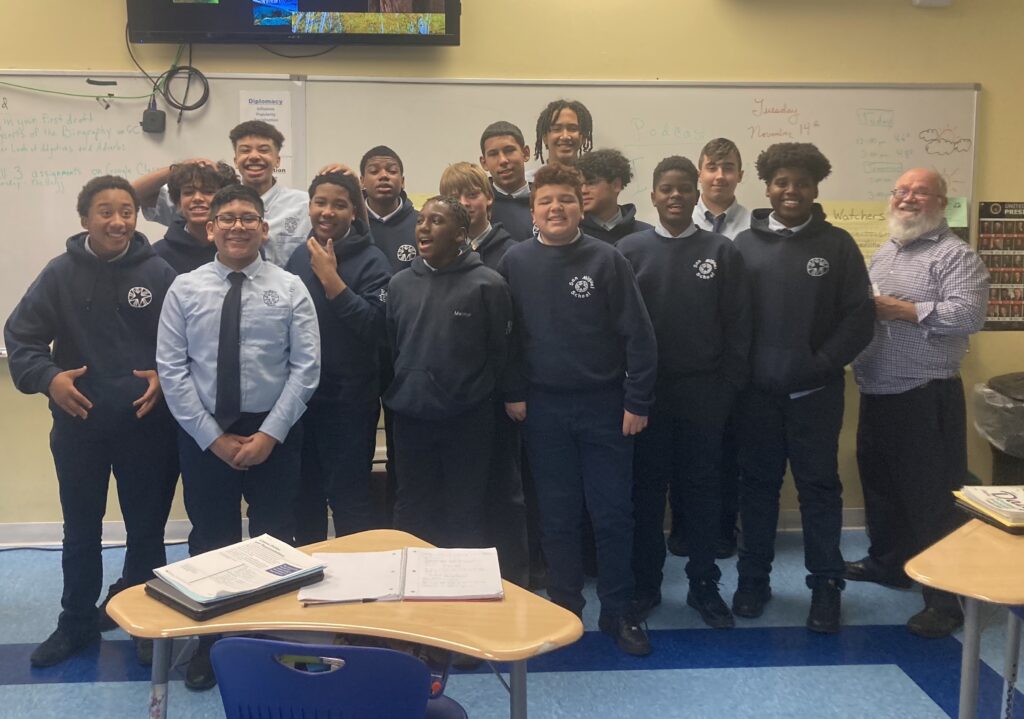
“I think bad air quality can affect your education, because if there’s bad air quality, then you wouldn’t really be focused,” says Rafael M., a 13-year-old student at the San Miguel School school for boys in Providence. “You would mostly be focused on that more than your schoolwork. And you wouldn’t be paying attention.”
Rafael is one of the students participating in Environmental Justice Academy, an environmental education program developed by the Roger Williams Park Zoo, in partnership with the San Miguel School and The Sophia Academy. According to its creators, the program aims to “explore the links between environmental justice, conservation, and social justice” and to spur nuanced conversations on topics such as colonialism’s influence upon conservation, and environmental racism in BIPOC communities.
Meg Archer, a School Programs Specialist with the Zoo, is an educator with the Environmental Justice Academy. After some foundational conversations with the San Miguel students, she says, they “chose to focus on the schools in Providence after learning that many schools are physically degrading… we learned about harmful effects of air quality and in what spaces air quality can be worse than others.”
“I think students around RI should know what good air quality is and what bad air quality is,” says student Treighton. “That way they can know if they’re breathing in good air or bad air.” Another student, Jayden, adds: “We’re learning about how mold or anything harmful to the body or your environment can mess up your environment, how air quality can mess with you.” His classmate Rosmany M. says, “If we have dust in the air, and you’re breathing that in, if you’re answering a question… dust gets in your throat or you could get sick.”
The class and their instructors used their grant money to purchase an air quality meter, which they used to measure the AQI (Air Quality Index) in different spaces in their school. The worst culprit of bad air quality? The gym. Student Dante says “the air quality tester is like a phone, but a little bit smaller lengthwise. It has a little screen that tells you the air quality number and if it’s good or bad.” Jayden adds, “It looks like a walkie talkie.” Later, they purchased more air quality meters to donate to other school libraries, so students like them could rent out these meters for free, almost like a library book.
The class also acquired several potted plants for their classroom and others’ as part of their push to improve air quality. Student Pablo L. says of these plants, “They take in carbon dioxide and take out oxygen so people can breathe oxygen.” The class named one of their own potted plants William, in honor of a former classmate who moved out of state.
Interviews have been lightly edited for clarity.